5 Helpful Bacteria
Bacteria are microscopic and unicellular organism that are present everywhere around us. The air we breathe, in the soil, the water we drink, and anywhere and everywhere we live. Most importantly, bacteria are also present in the body of other living organism including human.
The term ‘Bacteria’ was first coined by F.J. Cohn in 1854 but the scientist who discovered it was Anton Van Leeuwenhoek. Bacteria are generally known as the causative agent for different types of diseases.
Need more information on Bacteria? Chat Live Live chat with online Microbiology experts!
But not all the bacteria that are present in nature are the medium for transmission of different diseases. Rather there are many good bacteria that are helpful bacteria for the survival of human on the earth. Some of these types of good bacteria and helpful bacteria are present in our food whereas other helpful bacteria are already there surviving inside our system. Following is the list of 5 helpful bacteria out of the many various types of good bacteria.
1) Lactobacillus acidophilus
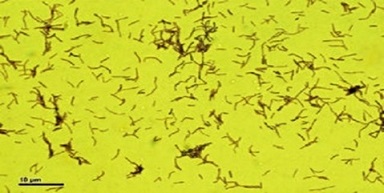 Lactobacillus is a gram positive, rod shaped bacteria that is present in dairy food products and different parts of human body. Lactobacillus acidophilus bacteria is also termed as “friendly bacteria” since it is a good bacteria helpful in treatment of many diseases in human. L. acidophilus uses lactose to produce lactic acid, which is a metabolic byproduct; thus serving in the process of fermentation. Other useful benefits of this Lactobacillus bacteria are:
Lactobacillus is a gram positive, rod shaped bacteria that is present in dairy food products and different parts of human body. Lactobacillus acidophilus bacteria is also termed as “friendly bacteria” since it is a good bacteria helpful in treatment of many diseases in human. L. acidophilus uses lactose to produce lactic acid, which is a metabolic byproduct; thus serving in the process of fermentation. Other useful benefits of this Lactobacillus bacteria are:
- Lactobacillus acidophilus is present in vagina of female. Thus the existence of Lactobacillus acidophilus bacteria in vagina helps to create the acidic environment which inhibits the growth of any microorganism.
- Lactobacillus acidophilus is present in the Oral cavity and intestine of human body where it aims to breakdown lactose. Moreover, the presence of this Lactobacillus bacteria in the gut keeps the atmosphere around that area acidic so that no micro-organisms can grow.
- Lactobacillus acidophilus is present in certain dietary products like yoghurt
- Lactobacillus acidophilus is also used as probiotics and an alternative source of medicine for treatment of different diseases like diarrhea, vaginal infection, bowel syndrome etc.
Find out more about Probiotics!
2) Bifidobacterium animalis
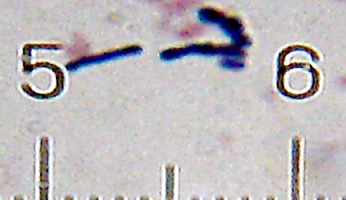 Bifidobacterium animalis is a gram- positive bacteria that is branched and rod-shaped. B.animalis is also lactic acid bacteria, present in the gut of animals and humans. Hence, the production of lactic acid creates acidic environment in the intestine that inhibit the growth of any microorganism. Moreover, Bifidobacterium also aids in the proper digestion of food. It can be taken orally in the form of medicine to treat different diseases such as diarrhea, bowel infections etc.
Bifidobacterium animalis is a gram- positive bacteria that is branched and rod-shaped. B.animalis is also lactic acid bacteria, present in the gut of animals and humans. Hence, the production of lactic acid creates acidic environment in the intestine that inhibit the growth of any microorganism. Moreover, Bifidobacterium also aids in the proper digestion of food. It can be taken orally in the form of medicine to treat different diseases such as diarrhea, bowel infections etc.
Need more help in Microbiology? Get Microbiology Homework Help now !
3) Cyanobacteria
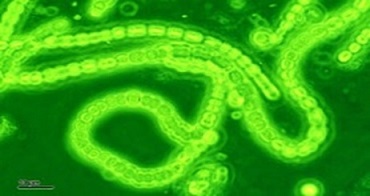 Cyanobacteria are gram- negative, rod shaped bacteria that are generally found in water. Cyanobacteria are photosynthetic bacteria that can prepare their own food. These Cyanobacteria help to fix the atmospheric nitrogen thus converting it in the useable form for the plants. Beside this, Cyanobacteria are also the source of nitrogen fertilizer for different crops used by humans. Hence, Cyanobacteria are important for the proper growth of the plants. Since, cyanobacteria are present in water and they are photosynthetic in nature, a term called blue-green algae is used to designate these bacteria. Moreover, they help to maintain balance in the ecosystem.
Cyanobacteria are gram- negative, rod shaped bacteria that are generally found in water. Cyanobacteria are photosynthetic bacteria that can prepare their own food. These Cyanobacteria help to fix the atmospheric nitrogen thus converting it in the useable form for the plants. Beside this, Cyanobacteria are also the source of nitrogen fertilizer for different crops used by humans. Hence, Cyanobacteria are important for the proper growth of the plants. Since, cyanobacteria are present in water and they are photosynthetic in nature, a term called blue-green algae is used to designate these bacteria. Moreover, they help to maintain balance in the ecosystem.
4) Lactobacillus reuteri
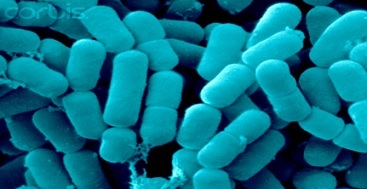 Lactobacillus reuteri is also a major lactic acid bacteria that is found in gut of humans, birds and other mammals. The presence of L. reuteri serves number of benefit in human body. Some of the helpful uses of Lactobacillus reuteri include treatment of diarrhea, prevention of infection, reduction any gastrointestinal problems, etc. Moreover, this bacteria is also present in the breast of feeding mother and most of the dietary products. image Reference:- http://celiomendes-saude.blogspot.in/2014/03/cultura-de-lactobacillus-reuteri.html
Lactobacillus reuteri is also a major lactic acid bacteria that is found in gut of humans, birds and other mammals. The presence of L. reuteri serves number of benefit in human body. Some of the helpful uses of Lactobacillus reuteri include treatment of diarrhea, prevention of infection, reduction any gastrointestinal problems, etc. Moreover, this bacteria is also present in the breast of feeding mother and most of the dietary products. image Reference:- http://celiomendes-saude.blogspot.in/2014/03/cultura-de-lactobacillus-reuteri.html
Juggling with difficult MicroBiology Course Topics? Order Online Homework Help!
E.coli
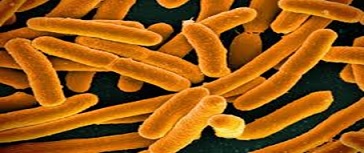 E.coli also known as Escherichia coli is one of the most common bacteria that is beneficial as well as harmful. It is gram- negative bacteria that is rod in shape. Most of the beneficial strain of E.coli is present in the small and large intestine of mammals that aids in different ways:
E.coli also known as Escherichia coli is one of the most common bacteria that is beneficial as well as harmful. It is gram- negative bacteria that is rod in shape. Most of the beneficial strain of E.coli is present in the small and large intestine of mammals that aids in different ways:
- E.coli helps in breakdown of monosaccharaides.
- E.coli produces some of the important vitamin like vitamin K, biotin and vitamin B complex.
- E.coli also enhances the immune response of the body.
- E.coli prevents any complications of intestine.
- E.coli prevents accumulation of waste products in the body.
- Improves the process of digestion.
But undoubtedly, there are other strains of this bacteria that are responsible for different types of diseases like diarrhea, dysentery or kidney failure. Hence, E.coli within our body is generally useful but when the harmful strain enters from the environment, it can affect the body in different ways.
This is the list of helpful bacteria that are types of good bacteria for humans. Some helpful bacteria stay within our system and benefit through absorption, digestion and excretion of waste whereas other types of good bacteria are present in the external environment to maintain the balance in the ecosystem.
CAN YOU HELP ME UNDERSTAND MICROBIOLOGY?
Yes, we can help with microbiology! Whether you simply want to know what is microbiology or want microbiology homework answers such as what are the types of good bacteria, our online microbiology tutors and biology experts can are just a chat away. Sign up for our MicroBiology Assignment Help service and receive a free Microbiology Study Guide to practice microbiology test quiz questions and learn from thousands of solved microbiology q&a homework answers to excel in your biology microbiology exams.


